Navigating the realm of the various retirement plan options available to self-employed business owners can feel like a daunting task, especially when it comes to selecting the right option for your unique circumstances. Among the array of choices available, two popular options stand out for self-employed individuals: the SEP IRA and the Solo 401(k). Each comes with its own set of benefits and drawbacks, tailored to suit different business structures and financial goals. Let’s delve into the nuances of both to help you understand which option might be best for you.
SEP IRA (Simplified Employee Pension Individual Retirement Account)
A SEP IRA is a straightforward retirement plan designed for small business owners and self-employed individuals. Here’s why it might be the right fit for you:
Benefits:
- Simplicity: Setting up and maintaining a SEP IRA is hassle-free, making it an attractive option for those who prefer a straightforward approach to retirement planning. Contributions are typically made by the employer, based on a percentage of each eligible employee’s compensation. Therefore, if the business is owned and operated by you and you alone, there’s only one contribution you have to worry about.
- High Contribution Limits: As of 2024, you can contribute up to 25% of your net self-employment income or $69,000 (whichever is less) annually – assuming you made more than $750 this year, we’re betting that if you’re reading this you probably did. This allows for substantial tax-deferred savings, empowering you to build a robust retirement fund. It’s important to consult with your wealth advisor and CPA to ensure that you are deferring as much as possible and taking advantage of this.
- Flexibility: SEP IRAs offer flexibility in contributions, allowing you to adjust your contributions annually based on your business’s financial performance. There are no mandatory contributions in years when business is slow, providing relief during lean times.
Drawbacks:
- Maxing Out Contributions Requires High Income: SEP IRAs limit you to the lesser of 25% of your net self-employment income or $69,000. Therefore reaching the $69,000 max contribution limit requires net income of $276,000. Annual income below that amount will reduce the maximum amount you can contribute.
- Employer Contributions Only: SEP IRAs rely solely on employer contributions, which means you bear the entire responsibility for funding your employees’ retirement accounts. While this can be a generous perk, it might not be feasible for businesses with fluctuating revenues. That said, if you are the only employee of your business, this is not a factor but is still important to know if and when you expand your business beyond just yourself.
Real World Example: Consider Sarah, a late 30s freelance consultant helping civil engineering firms with their complex problems. Her husband is a high level executive with a military contractor. She decides to take advantage of the simplicity of a SEP IRA as it allows her to save a significant portion of her income while providing flexibility in contribution amounts, depending on her project workload and allows her to focus on her business instead of worrying about managing a retirement plan.
Solo 401(k), Individual 401(k), or Self-Employed 401(k)
These terms all mean the same thing. A Solo 401(k) is a retirement plan tailored for self-employed individuals or business owners with no employees other than a spouse. Let’s explore why it might be a good option for your retirement strategy:
Benefits:
- Higher Contribution Limits: As of 2024, Solo 401(k) participants can contribute up to $69,000 annually, plus an additional $7,500 in catch-up contributions for individuals aged 50 and above (for a total of $76,500). This enables substantial tax-deferred savings, especially for those nearing retirement age.
- Employer and Employee Contributions: Solo 401(k)s allow for both employer and employee contributions, providing the flexibility to maximize retirement savings. You can contribute as both the business owner and the employee, effectively doubling your retirement contributions. Some additional important notes about contributions below:
-
- As the employee, you can contribute up to $23,000 in 2024, or 100% of compensation, whichever is less. As previously stated, those 50 or older get to contribute an additional $7,500.
-
- As the employer, you can make an additional profit-sharing contribution of up to 25% of your compensation or net self-employment income. “Net self-employment” is defined as your net profit less half your self-employment tax, plus the plan contributions you made for yourself.
-
- Keep in mind that if you’re side-gigging, employee 401(k) limits apply by person, rather than by plan. That means if you’re also participating in a 401(k) at your day job, the limit applies to contributions across all plans, not each individual plan.
- Spousal Savings: The solo 401(k) rule typically prohibits having employees, but the IRS makes one exception: your spouse, provided they receive income from your business. This exception potentially doubles the contribution limit for your family, depending on your earnings. Your spouse can contribute as an employee up to the maximum employee contribution limit (plus any applicable catch-up provision for those aged 50 and above). As the employer, you can also make a profit-sharing contribution to the plan for your spouse, capped at 25% of their compensation.
Drawback:
- Complexity: Compared to SEP IRAs, Solo 401(k)s involve more administrative responsibilities, including annual filings and compliance with IRS regulations. This could be daunting for individuals who prefer a hands-off approach to retirement planning.
Real World Example: Imagine Mike, a high income, self-employed freelance architect in his late 40s, and his wife Emily, who assists him in his business – scheduling meetings, running to the print shop, etc. They have been so focused on running the business and putting kids through school that they have neglected to save for themselves. They opt for a Solo 401(k) to take advantage of higher contribution limits, both now and in their 50s, with the ability to make both employer and employee contributions for each of them and grow their retirement savings quickly.
Which Option Should I Choose?
In the realm of retirement planning for self-employed individuals, the choice between a SEP IRA and a Solo 401(k) hinges on factors such as simplicity, contribution limits, administrative responsibilities, and employee structure. While the SEP IRA offers ease of setup and flexible contributions, the Solo 401(k) provides higher contribution limits and the ability to make both employer and employee contributions. Ultimately, the decision should align with your business’s financial objectives and long-term retirement goals. Evaluate your options carefully and consider consulting with your financial advisor and CPA to determine the best fit for your unique circumstances.
Please remember to contact BentOak Capital (“BentOak”), in writing, if there are any changes in your personal/financial situation or investment objectives for the purpose of reviewing/evaluating/revising our previous recommendations and/or services, or if you want to impose, add, to modify any reasonable restrictions to our investment advisory services, or if you wish to direct that BentOak to effect any specific transactions for your account. A copy of our current written disclosure Brochure discussing our advisory services and fees continues to remain available upon request or at www.bentoakcapital.com.
This information is not intended to be a substitute for specific individualized tax advice. We suggest that you discuss your specific tax issues with a qualified tax advisor.
The opinions voiced in this material are for general information only and are not intended to provide specific advice or recommendations for any individual. All performance referenced is historical and is no guarantee of future results. All indices are unmanaged and may not be invested into directly.
Securities offered through LPL Financial, Member: FINRA/SIPC. Investment advice offered through BentOak Capital, a registered investment advisor and separate entity from LPL Financial.







